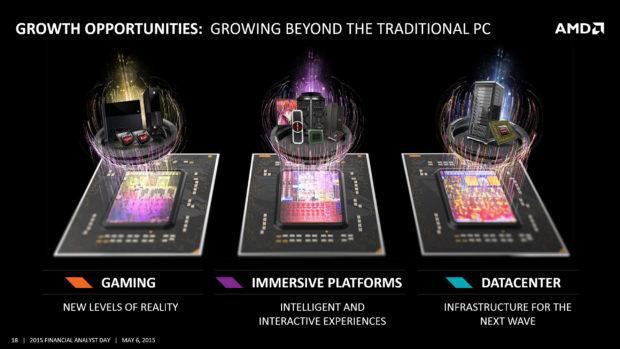10 plus minutes of near dead airtime now. Not impressed.
He went to the bathroom lol
How dare he stops entertaining us without permission.
That cunt! 
Inmy opinion, they are taking a similar approach with Vega like they do with CPU's. So think of a set of compute cores sharing L3 cache and bandwidth through the Infinity Fabric
Watched the first benchmarks or two and it didn't look earth-shattering, but I'll wait for their proper, full review to see an entire spread of stuff. Hopefully there will be some games where it does really well to offset the ones where its just meh (and calling it "meh" really is an understatement since it's probably still comparable to a 1080), and hopefully it will shine in a full suite of professional benchmarking tools against the Quadro P4000 and Titan Xp.

AMD Infinity Fabric, AMD Ryzen And Vega
To learn more about AMD Infinity Fabric you need to know what Hyper Transport. In essence, this is what Intel calls Front Side Bus, this is what ICs use to communicate with one another but while Front Side Bus is limited to Intel, Hyper Transport is open source. Hyper Transport also plays the role of the interconnect when we talk about multiple processors. AMD Infinity Fabric will be building on the Hyper Transport and be making it available for AMD Ryzen as well as Vega.
It is safe to call this HyperTransport 2.0 and even though there is not much that we know about this tech as of right now we do know the following about it:
It will be completely modular
The bandwidth will scale from 30-50 GB/s for notebooks and around 512 GB/s for Vega GPU.
It will be used as both a network-on-chip solution as well as clustering link between GPUs and x85 server SoCs. CCIX standard is also supported which will allow it to be coupled with accelerators and FPGAs._
it would be good if future dual-gpu cards used infinity fabric instead of crap crossfire (yes it works in specific games well but not under Linux for OGL)
They will be selling a gaming card. If that doesn't do make run all the games fast it doesn't matter what crazy technology is inside the card because it clearly doesn't give you any benefits.
AMD has confirmed that Vega utilises their new Infinity Fabric tech
In simple terms, AMD's Infinity Fabric is a low-latency, high bandwidth interconnect that will allow AMD to connect hardware modules together, be it on a silicon level or as an interconnect between different chips.
Today we see Infinity Fabric connect chips within the same piece of silicon, like the two 4-core modules in the Ryzen 7 1800X, dies on a single chip like AMD's EPYC server products (see image below) and to connect dual EPYC CPUs within a single server. This shows exactly how flexible AMD's Infinity Fabric can be, allowing the company to join compute engines together in ways that were almost impossible before.
Vega is the first AMD GPU to utilise the companies Infinity Fabric technology, with AMD using this tech as the basis of all their future ASIC (application-specific integrated circuit) designs moving forward. This will make the creation of future APUs and other custom SoCs much easier in the future though it also offers some interesting possibilities for multi-die GPUs.
While Raja Koduri does not explicitly mention any multi-die GPU designs during the AMA, though he does admit that it is possible.
Previously Raja Koduri has stated that the with changes to Moore's Law and the sheer difficulty of manufacturing large GPU products that the industry needed to "get past Crossfire" and that the "economies of the smaller die" would become much more important.
With Infinity Fabric, AMD could potentially bring together several smaller GPU dies to create a larger flagship product, similar to how AMD's EPYC server products use an Infinity Fabric based Multi-Chip-Module (MCM) to create their 32-core Naples/EPYC flagship out of four 8-core CPU dies.
I think Vega is the 'jumping off point' for AMD and at the prices they are delivering these cards ( The gaming cards not the Pro ) could still be beneficial for Price : Performance
on-chip dual gpu processing without the need for a software layer to actually make it work would be a dream. Now the trick would be getting such tech running through two cards in different PCIe slots, but I don't think that will be ever possible.
You want 600W gpus?
True, so that is the question now. What does it cost?
Right now if those numbers are correct in the gaming benchmarks, I would say it can not go above 500,- bucks.
LOL, good point actually. 
I mean 600w you would need like 4 slot gpu design for like 240+ rad
If it goes that low, then I bet the miners will be all over it. Its an AMD card, so compute will be through the roof, and being HBM2, the latency will be VERY low which culminates in it being the perfect card to mine ethereum...
You don't seem to be watching the stream right now. 
So far nothing really worked. The one that did was hardly any faster than a fury.
I'd like to see it with games that are not 2-4yrs old, optimized for old API's and the like
They ran ROTR and Hitman in DX12.
I agree, but this is the Pro card, not the Gaming card. So drivers are out of wack...
Yeah I'm listening to a podcast rn so I've not been watching. That's surprising to me. I'd have thought that it would have been tremendous at mining considering the HBM2 and how good other AMD gpus have been at mining.
